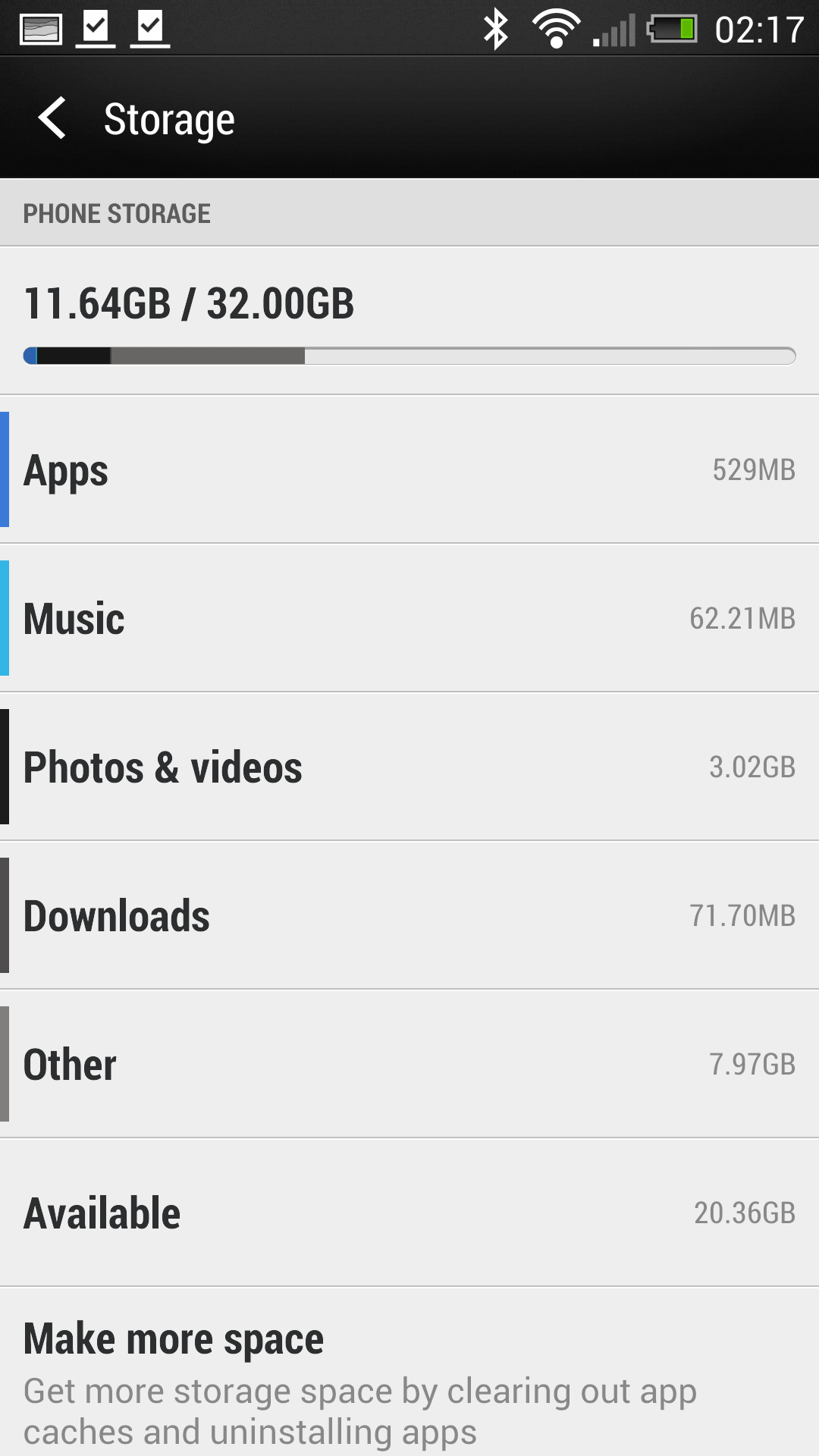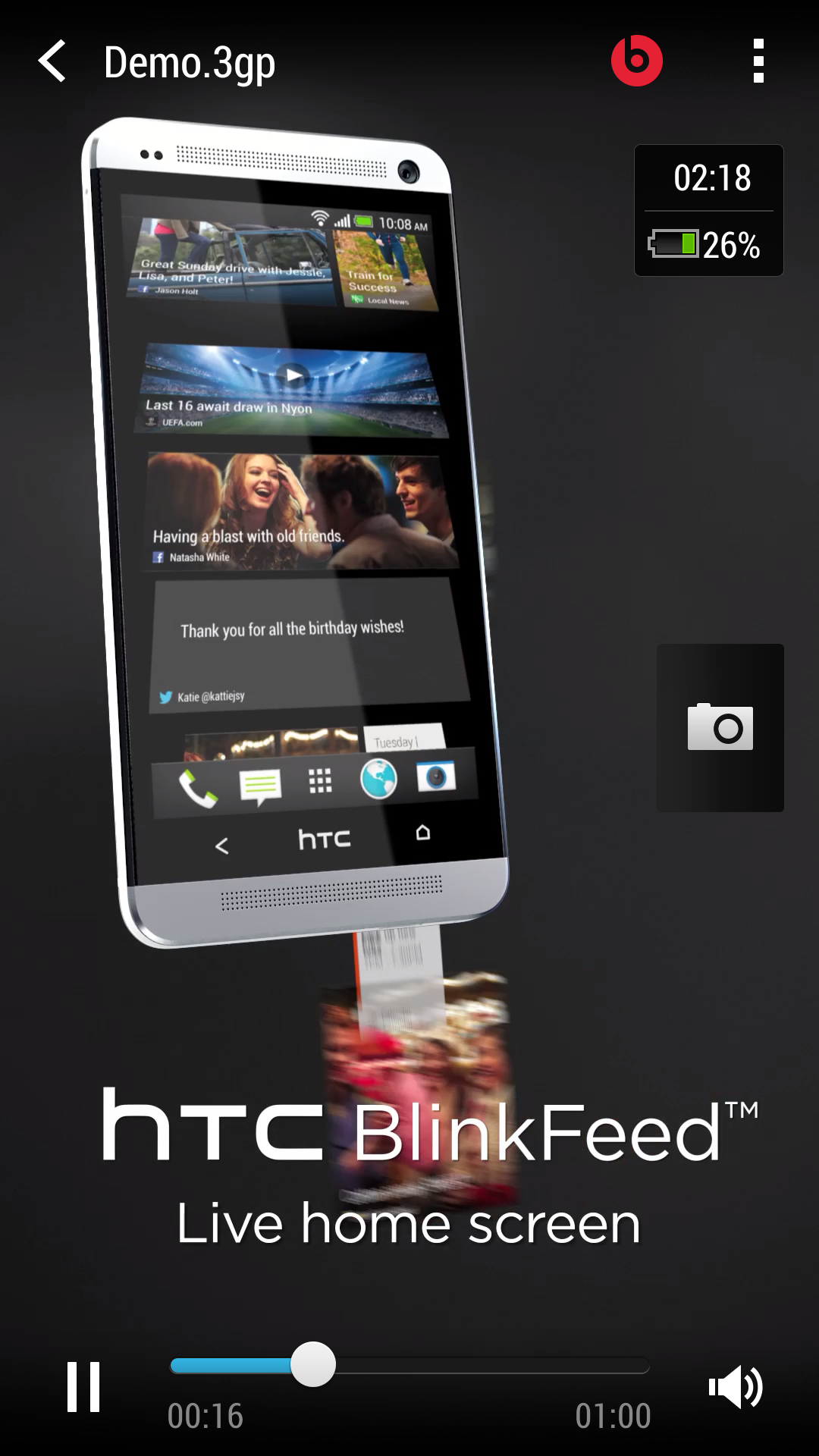Why you can trust TechRadar
Media on the HTC One is a game that's hard to typify as the handset is clearly set up for such an activity, and yet it makes it quite hard to use at times. The first thing we'll deal with is BoomSound - and not just because it reminds us of this every time we say the word.
BoomSound is the combination of the two front facing speakers and the inbuilt amp to help boost the sound through your headphones - and both chuck out fantastic sound. The latter really does boost the volume levels to a give as more even tone to your tunes, while the former is simply amazing when you're showing off videos to friends and loved ones. As you always do, you bore, you.

Actually, that was one of our biggest criticisms of BoomSound and the two front-facing speakers - we didn't think many people would ask others to crowd around a phone screen that often, thus rendering the technology pointless unless you're alone in a hotel room and want to make the sound of the female actress you're watching sound all the more accurate.
But in just a few days we found ourselves showing off the quality of the front speakers on a number of occasions - be it the newest version of Gallon Smashing, or a particularly dead-horse-flogging Harlem Shake video - and each time, the bass and clarity of the music was so impressive, unlike anything we've heard coming from a mobile phone.
Also, with the addition of HTC Zoe video highlight reels, you'll find that showing off your work at splicing together pictures is used a lot more often too, and the sound quality really adds to the show. So while it's perhaps not the most important thing in the world to have on a smartphone, BoomSound works.
Music
The music ability of the HTC One is something not to be sniffed at, and is easily the equal of anything else out there. The music hub has been dropped in favour of a pre-loaded folder with all your music and media bits in one place, which leads to the lovely and confusing Music and Google Music, both apps denoted by a headphones icon, living side by side.

The former is just the onboard music player, the latter the new service from the search giant that lets you upload your tunes to one place and stream them back down again.
Both offer high quality sound, and more importantly, both can run on the lock screen. However, Google Music, for all its power, still needs a data connection at all times, so unless you're on an unlimited plan its worth staying away.

HTC Music doesn't have the cool SoundHound integration that we're used to, although the app is present on the phone. But what it does bring is new visuals and lyrics to songs if they're available (providing the song information is correct and GraceNote can access it).
It's a fun feature for when you're trying to work out the real words (turns out it wasn't 'wipe in the Vaseline') but unless you've got aspirations of making it BIG on the professional karaoke circuit, this isn't going to be a lot of use. Good when combined with the BoomSound speakers though.
The size of the internal memory means you'll be OK for space for a fairly decent-sized music collection, although if you're partial to making Zoes all over the place you might want to keep an eye out for the 64GB version of the phone, as we can see a critical storage error cropping up quickly when you want to lob a decent-sized chunk of music on there.
Why no slot?

So, let's address the elephant in the room here - the lack of the expandable memory slot. We spoke to SanDisk about this problem, and the flash memory maker - which maintained neutrality on the issue of memory card slots as it provides the flash memory either way - and it confirmed that HTC has missed out on the slot again to preserve the design of the HTC One.
SanDisk also said that while it didn't think the card slot was needed for a lot of people, it's still one of the most important things for consumers look for when buying a top end smartphone, and as such, could be seen as a big omission.
We agree to a point - the need for a memory card slot is definitely decreasing, but there's no doubt the HTC One couldn't have benefitted as there's no place to get rid of your Zoes to. You can upload them as movies to Dropbox, for instance, and you can save the video highlights as MP4 files and store them on YouTube, but in reality, most people will just leave them on their phone until space fills up.
The Samsung Galaxy S4 is going to pack a memory card slot, the Sony Xperia Z manages to do so - so come on HTC, what gives? You can make the case that people don't need it, but when a video package is so easy to create yet munches 0.5GB of the addressable memory (which is already lower than the 32GB advertised thanks to the OS) and you can see a problem coming. Please don't let's see a repeat of the situation where apps can't be installed due to storage size.
It's even more annoying that HTC has outed versions of the One in China and Japan with a removable backplate, and the HTC One Max has the trick too - showing that the aluminium design can stay (albeit not as sleek) while bringing the microSD expandable memory.
Video
One of the key features of any Full HD phones these days has to be the performance of the video player, and to that end, most are successful. The Sony Xperia Z1 uses the Bravia Engine 2 to bring clear, crisp images; the LG G2 offers bonkers levels of clarity, brightness and colour saturation. And of course Samsung is going to continue with the like it or hate it HD Super AMOLED screen.

So why does the HTC One, with a perfectly bright and capable screen, not manage to play movies back very well?
We downloaded The Amazing Spiderman from its HTC Watch service to check it out in HD, and we were disappointed by the results. The screen was too dark in automatic brightness mode, and when turned up full, sucked the battery at a horrendously fast rate.
There was also a big issue with the sound falling out of sync quickly on the Watch video, but that's more to do with the quality of that service than anything else - if you're looking for movies, Google's Play Store is a better bet, but doesn't have the same depth of catalogue.
Also, while the range of codecs you can use is impressive on the HTC One, including AVI (but not DivX) there's actually no obvious way to play them. Really - unless you want to dive through the HTC TV app or the Google Play Movies function, you'll have to download a dedicated player to achieve your goals. The videos don't even show normally in the Gallery - and all this despite HTC telling us that it will be bringing the ability to play back your own clips through the Watch app.
It's like the Taiwanese firm doesn't want you watching videos on the HTC One.
If you've got a bright enough scene on show, the HTC One can play it back smoothly and crisply. However, take it down a notch in brightness and suddenly you're struggling - it's not a deal breaker, but really, we expected better from a flagship phone.

Gareth has been part of the consumer technology world in a career spanning three decades. He started life as a staff writer on the fledgling TechRadar, and has grew with the site (primarily as phones, tablets and wearables editor) until becoming Global Editor in Chief in 2018. Gareth has written over 4,000 articles for TechRadar, has contributed expert insight to a number of other publications, chaired panels on zeitgeist technologies, presented at the Gadget Show Live as well as representing the brand on TV and radio for multiple channels including Sky, BBC, ITV and Al-Jazeera. Passionate about fitness, he can bore anyone rigid about stress management, sleep tracking, heart rate variance as well as bemoaning something about the latest iPhone, Galaxy or OLED TV.
